Diversity at Scecina
Welcome!
At Scecina Memorial High School, we are very proud of our diverse learning environment.
Our welcoming community has grown to include students from 90 different previous schools, and from all over the globe. The learning experience at Scecina is one that creates memorable and diverse opportunities, to transform critical intercultural perspectives and to nurture global connections from the Catholic perspective. Scecina’s 2022-23 student population is 41% Hispanic or Latino; 40% Caucasian 12% Black or African American; 4% International; 3% Native American or Multiracial.

Amy Fix
3 reasons diversity at school matters
By Amy Fix, Chair, World Languages
It is difficult to overstate the value of a diverse school, because the proven outcomes for students reach far beyond what you might consider on a surface level.
First, at a Catholic school like Scecina, students learn that the foundation of all Catholic Social Teaching is the inherent dignity of the human person as created in the image and likeness of God. The belief that we all are created in the likeness of God offers a moral vision and a worldview that embraces diversity.
In education, we know that students who are exposed to different races, religions, and socioeconomic classes are more empathic, compassionate, and prepared to face a world with so many faces and backgrounds. But that is not the only benefit.
In its article, “The Benefits of Socioeconomically and Racially Diverse Classrooms,” the Century Foundation highlights three categories of benefits: academic/ cognitive, civic/social-emotional, and economic benefits.
Based on that article and my 20-plus years of teaching experience, I am sharing my top three reasons you should send your student to a school where he or she will interact with people from different backgrounds, races, cultures, and wealth.
Students at these schools are:
- Achieving quality adult lifestyles. Studies show that students who attend diverse schools are developing into what the world sees as successful adults. They are making more money, living a healthier lifestyle, and staying out of jail. In short, they are productive citizens with the means to serve their communities as a positive force.
- Developing powerful 21st-century skills. In his book “The Difference,” social scientist Scott E. Page displays his findings on integrated It turns out that these spaces encourage critical thinking, problem-solving, and creativity. These are 21st-century skills that every high school graduate needs, whether he or she is college-, workforce-, or military-bound.
- Breaking down racial bias and stereotypes. This benefit is the one that sticks out the most to me. If you want your student to be one who tears down divisions and changes society for the better, send her or him to a diverse
In addition to the traditional definition of diversity meaning race and socioeconomic class, we must not forget that a diverse space now includes other categories of diversity: educational background, gender, ethnicity, religion, and culture. If we can immerse our students in places where they can be the people God created them to be while still valuing the differences in those around them, we are setting them up to have the skills and experiences they need to follow God’s will and reach their potential.
Amy Fix is World Language Department Chair and English as a New Language Teacher at Scecina Memorial High School in Indianapolis. She is the 2020 Teacher of the Year in the Archdiocese of Indianapolis.
